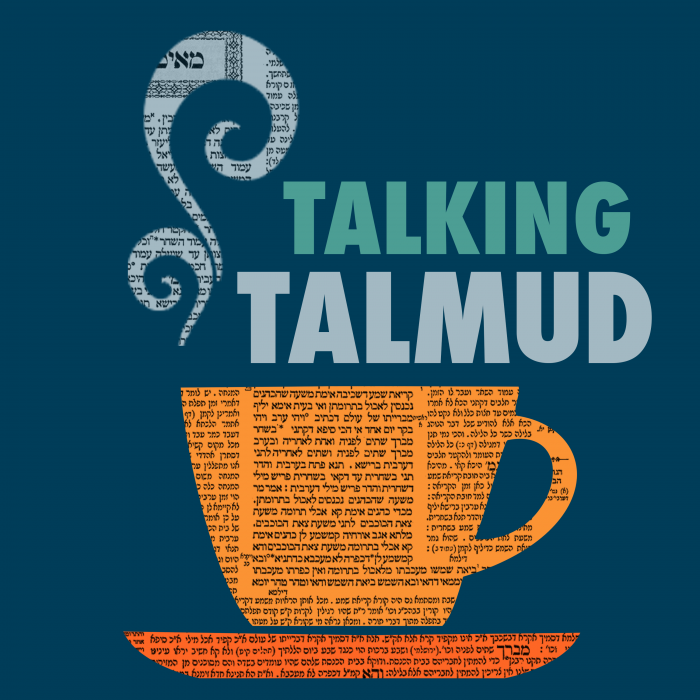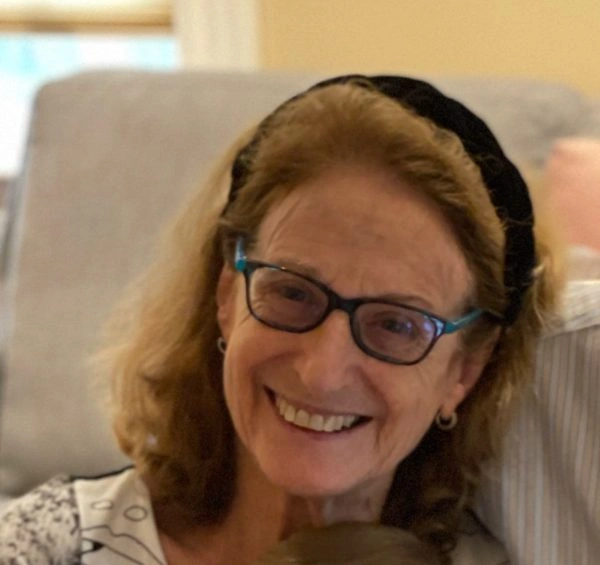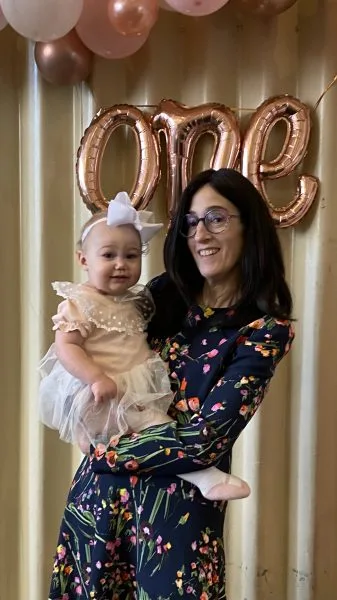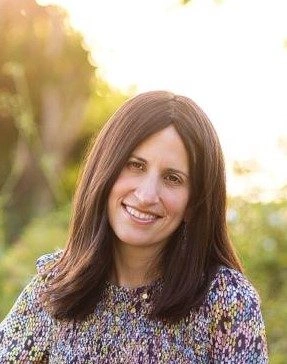If the blood spills before all the sprinklings are finished, a new animal is slaughtered. What happens to the animals whose blood was sprinkled? If it was a goat, a new lottery must be done – are all the goats that were chosen to go to Azazel actually sent to Azazel? Rav Nachman concludes that only one is sent. Which one? The two goats are supposed to be identical in a number of ways, but if they are not, they can still be used. What happens if one of them dies? From where is the law derived that they should be identical but if not, they can still be used? The same laws apply also to the two lambs brought for a leper and the two birds used in the leper’s purification process and for the two lambs used for the Shabbat additional sacrifices. Why does it not apply to the two lambs used for the Tamid daily sacrifice?
Yoma 62
Share this shiur:
Want to dedicate learning? Get started here:


Today’s daily daf tools:
Today’s daily daf tools:
Delve Deeper
Broaden your understanding of the topics on this daf with classes and podcasts from top women Talmud scholars.
New to Talmud?
Check out our resources designed to help you navigate a page of Talmud – and study at the pace, level and style that fits you.
The Hadran Women’s Tapestry
Meet the diverse women learning Gemara at Hadran and hear their stories.
Yoma 62
וְכִי עֶדְרוֹ שׂוֹרֵף? מִי דָּמֵי — הָתָם לָא כְּתִיב ״אוֹתוֹ״, הָכָא כְּתִיב ״אוֹתוֹ״.
And does he burn his flock? The Torah obligated him to burn only one goat, and yet there are times when he must burn several, as stated in the mishna. Rabbi Naḥman retorts: Is it comparable? There, with respect to burning the goats, it is not written: “It,” which would restrict the burning to only one animal, whereas here, with regard to the scapegoat, it is written: “It,” which indicates that one animal alone is sent away. The objection has been refuted and indeed only one scapegoat is used.
אִיתְּמַר, רַב פַּפִּי מִשְּׁמֵיהּ דְּרָבָא אָמַר: רִאשׁוֹן מְשַׁלֵּחַ, וְרַב שִׁימִי מִשְּׁמֵיהּ דְּרָבָא אָמַר: אַחֲרוֹן מְשַׁלֵּחַ. בִּשְׁלָמָא רַב שִׁימִי (בַּר אָשֵׁי) מִשְּׁמֵיהּ דְּרָבָא, דְּאָמַר אַחֲרוֹן מְשַׁלֵּחַ — קָסָבַר: הוֹאִיל וְגָמַר בּוֹ כַּפָּרָה. אֶלָּא רַב פַּפִּי מִשְּׁמֵיהּ דְּרָבָא, מַאי קָסָבַר? סָבַר לַהּ כְּרַבִּי יוֹסֵי, דְּאָמַר: מִצְוָה בָּרִאשׁוֹן.
§ It was stated that amora’im disagreed about the following issue. Rav Pappi said in the name of Rava: He sends the first goat; and Rav Shimi said in the name of Rava: He sends the last of them. The Gemara analyzes the matter: Granted, according to the opinion of Rav Shimi bar Ashi in the name of Rava, who said that he sends the last of them, it works out well, as he probably holds as stated above, that the last goat is used, since the atonement is completed with it. However, with regard to Rav Pappi in the name of Rava, what does he hold? The Gemara answers: He holds in accordance with the opinion of Rabbi Yosei, who said that when several identical items are available for a mitzva, the mitzva is performed with the first of them.
הֵי רַבִּי יוֹסֵי? אִילֵּימָא רַבִּי יוֹסֵי דְּקוּפּוֹת, דִּתְנַן (רַבִּי יוֹסֵי אוֹמֵר): שָׁלֹשׁ קוּפּוֹת שֶׁל שָׁלֹשׁ שָׁלֹשׁ סְאִין שֶׁבָּהֶם תּוֹרְמִין אֶת הַלִּשְׁכָּה, וְהָיָה כָּתוּב עֲלֵיהֶם אב״ג.
The Gemara asks: To which of the halakhot of Rabbi Yosei is this referring? From which of Rabbi Yosei’s statements is this conclusion derived? If we say it is the statement of Rabbi Yosei with regard to containers, this is problematic. As we learned in a mishna that Rabbi Yosei says: There were three containers of three se’a each, with which they collect the donation from the chamber. Every year the money donated to the Temple by the people in the month of Adar was placed in a special chamber. The treasurers subsequently filled three containers with these coins and used the funds to purchase the communal offerings, e.g., the daily offerings and the additional offerings for Festivals. And the letters alef, beit, gimmel were written on the containers.
וְתַנְיָא, אָמַר רַבִּי יוֹסֵי: לָמָּה כָּתוּב עֲלֵיהֶן אב״ג — לֵידַע אֵיזֶה מֵהֶן נִתְרְמָה רִאשׁוֹן, לְהָבִיא הֵימֶנָּה רִאשׁוֹן, שֶׁמִּצְוָה בָּרִאשׁוֹן.
And it was taught in a baraita that Rabbi Yosei said: Why were the letters alef, beit, gimmel written on them? It was to ascertain from which of them the donation was collected first, so that they could bring the money from it first, as the mitzva is to use the coins of the first container. This apparently proves that according to the opinion of Rabbi Yosei, it is a mitzva to use the first item.
דִּילְמָא בְּעִידָּנָא דְּאִיתְחֲזַאי קַמַּיְיתָא, לָא אִיתְחֲזַאי בָּתְרָיְיתָא.
The Gemara responds: This is no proof, as perhaps at the time when the first container was fit to be used, the last was not yet fit to be used. When the first container was brought it was fit and designated for the offerings, whereas the coins in the second container had not yet been collected, and therefore the coins in the first container must be used first as they were sanctified first. Here, however, the scapegoat is consecrated only when its pair is sacrificed, and therefore the two cases are dissimilar.
אֶלָּא רַבִּי יוֹסֵי דְּפֶסַח (דִּתְנַן): הַמַּפְרִישׁ פִּסְחוֹ וְאָבַד, וְהִפְרִישׁ אַחֵר תַּחְתָּיו, וְאַחַר כָּךְ נִמְצָא הָרִאשׁוֹן, וַהֲרֵי שְׁנֵיהֶן עוֹמְדִין — אֵי זֶה מֵהֶן שֶׁיִּרְצֶה יַקְרִיב, דִּבְרֵי חֲכָמִים. רַבִּי יוֹסֵי אוֹמֵר: מִצְוָה בָּרִאשׁוֹן, וְאִם הָיָה שֵׁנִי מוּבְחָר מִמֶּנּוּ — יְבִיאֶנּוּ.
Rather, the principle that one uses the first item is derived from the statement of Rabbi Yosei with regard to the Paschal offering, as it was taught in a baraita: With regard to one who separated a sheep for his Paschal offering and the sheep was lost, and he separated another sheep in its stead, and afterward the first sheep was found, and they both stand before him, he sacrifices whichever of them he wants; this is the statement of the Rabbis. Rabbi Yosei says: The mitzva is performed with the first sheep. And if the second was of superior quality to it, he brings the second sheep. This proves that according to Rabbi Yosei, if there are two animals equally fit for an offering, one brings the animal that was chosen first.
הֲדַרַן עֲלָךְ הוֹצִיאוּ לוֹ
שְׁנֵי שְׂעִירֵי יוֹם הַכִּפּוּרִים — מִצְוָתָן שֶׁיִּהְיוּ שְׁנֵיהֶן שָׁוִין בַּמַּרְאֶה וּבַקּוֹמָה וּבַדָּמִים וּבִלְקִיחָתָן כְּאֶחָד. וְאַף עַל פִּי שֶׁאֵין שָׁוִין — כְּשֵׁרִין. לָקַח אֶחָד הַיּוֹם וְאֶחָד לְמָחָר — כְּשֵׁרִין.
MISHNA: The mitzva of the two Yom Kippur goats, the goat sacrificed to God and the goat sent to Azazel that are brought as a pair, is as follows, ab initio: That they will both be identical in appearance, i.e., color, and in height, and in monetary value, and their acquisition must be as one, i.e., they must be purchased together. And even if they are not identical, nevertheless, they are valid. And similarly, if he acquired one today and one tomorrow, they are valid.
מֵת אֶחָד מֵהֶם, אִם עַד שֶׁלֹּא הִגְרִיל מֵת — יִקַּח זוּג לַשֵּׁנִי. וְאִם מִשֶּׁהִגְרִיל מֵת — יָבִיא זוּג אַחֵר וְיַגְרִיל עֲלֵיהֶם בַּתְּחִילָּה,
If one of the goats died, if it died before the High Priest drew the lots, he immediately takes a counterpart for the second, since neither has yet been designated. And if it died after the High Priest drew the lots, he brings another pair of goats and draws lots over them from the start.
וְיֹאמַר: אִם שֶׁל שֵׁם מֵת — זֶה שֶׁעָלָה עָלָיו הַגּוֹרָל לַשֵּׁם יִתְקַיֵּים תַּחְתָּיו, וְאִם שֶׁל עֲזָאזֵל מֵת — זֶה שֶׁעָלָה עָלָיו הַגּוֹרָל לַעֲזָאזֵל יִתְקַיֵּים תַּחְתָּיו. וְהַשֵּׁנִי יִרְעֶה עַד שֶׁיִּסְתָּאֵב, וְיִמָּכֵר, וְיִפְּלוּ דָּמָיו לִנְדָבָה, שֶׁאֵין חַטַּאת צִבּוּר מֵתָה. רַבִּי יְהוּדָה אוֹמֵר: תָּמוּת.
After that lottery he utters a stipulation: If the one to be sacrificed to God died, that goat upon which the lot for God was drawn in the second lottery shall stand in its stead; and if the one to be sent to Azazel died, that goat upon which the lot for Azazel was drawn shall stand in its stead. And the second, superfluous goat, i.e., in the case where a new pair of goats was brought, should graze until it becomes unfit, at which point it will be sold, and the money received from its sale will go toward the purchase of a public gift-offering. Although for individual sin-offerings in similar circumstances there is no remedy and it is left to die, that is not the case here, as a communal sin-offering is not left to die. On the other hand, Rabbi Yehuda says: In this it should be left to die.
וְעוֹד אָמַר רַבִּי יְהוּדָה: נִשְׁפַּךְ הַדָּם — יָמוּת הַמִּשְׁתַּלֵּחַ. מֵת הַמִּשְׁתַּלֵּחַ — יִשָּׁפֵךְ הַדָּם.
And furthermore, Rabbi Yehuda said: If the blood of the goat sacrificed to God spilled before it was sprinkled, the scapegoat is left to die. Similarly, if the scapegoat dies, the blood of the goat sacrificed to God should be spilled, and two other goats are brought and lots are drawn.
גְּמָ׳ תָּנוּ רַבָּנַן: ״יִקַּח שְׁנֵי שְׂעִירֵי עִזִּים״, מִיעוּט ״שְׂעִירֵי״ — שְׁנַיִם. מָה תַּלְמוּד לוֹמַר ״שְׁנֵי״? שֶׁיִּהְיוּ שְׁנֵיהֶן שָׁוִים. מִנַּיִין אַף עַל פִּי שֶׁאֵין שְׁנֵיהֶן שָׁוִין כְּשֵׁירִין — תַּלְמוּד לוֹמַר: ״שָׂעִיר״ ״שָׂעִיר״ — רִיבָּה.
GEMARA: The Sages taught: It states: “He shall take two goats” (Leviticus 16:5). The minimum number indicated by a plural term, as the word goats is here, is two. If so, what is the meaning when the verse states: Two? It teaches that the two should be identical. And from where do we derive that even if the two goats are not identical they are nevertheless valid? The verses state and repeat the word goat, goat (Leviticus 16:9–10) to amplify and indicate that the goats are valid even if they are not identical.
טַעְמָא דְּרַבִּי רַחֲמָנָא, הָא לָא רַבִּי רַחֲמָנָא — הֲוָה אָמֵינָא פְּסוּלִין, עִיכּוּבָא מְנָא לַן?
The Gemara asks: The reason is specifically because the Merciful One in the Torah amplified and thereby indicated that the goats are valid even if they are not identical. Doesn’t this indicate that if the Merciful One did not amplify, I would have said the goats are disqualified? From where do we derive that the goats are prevented from being sacrificed if they are not identical? The principle with regard to sacrificial offerings is that if the Torah indicates a requirement only once, it is a mitzva ab initio, and if the Torah repeats the requirement, it is considered indispensable in order for the offering to be valid.
סָלְקָא דַּעְתָּךְ אָמֵינָא, ״שְׁנֵי״ ״שְׁנֵי״ ״שְׁנֵי״ כְּתִיב.
The Gemara answers: It could enter your mind to say that since the word two, two, two, is written three times in the relevant passage, the repetition indicates that the goats are disqualified if they are not identical. Therefore, the Torah had to indicate that the goats are valid even if they are not identical.
וְהַשְׁתָּא דְּרַבִּי רַחֲמָנָא ״שָׂעִיר״ ״שָׂעִיר״, ״שְׁנֵי״ ״שְׁנֵי״ ״שְׁנֵי״, לְמָה לִי? חַד לְמַרְאֶה, וְחַד לְקוֹמָה, וְחַד לְדָמִים.
The Gemara asks: And now that the Merciful One has amplified by repeating the word goat, goat, why do I need the threefold repetition of two, two, two? The Gemara answers that it teaches how the mitzva should be performed ab initio: One of the terms indicates that the goats should be identical in appearance, one indicates they should be identical in height, and one indicates they should be identical in monetary value.
תַּנְיָא נָמֵי הָכִי גַּבֵּי כִּבְשֵׂי מְצוֹרָע: ״יִקַּח שְׁנֵי כְּבָשִׂים״, מִיעוּט ״כְּבָשִׂים״ שְׁנַיִם, מָה תַּלְמוּד לוֹמַר ״שְׁנֵי״? שֶׁיִּהְיוּ שְׁנֵיהֶן שָׁוִין. וּמִנַּיִן שֶׁאַף עַל פִּי שֶׁאֵין שְׁנֵיהֶן שָׁוִין כְּשֵׁירִין — תַּלְמוּד לוֹמַר: ״כֶּבֶשׂ״ ״כֶּבֶשׂ״ — רִיבָּה.
The Gemara comments that this was also taught in a baraita with regard to the lambs brought by a leper, based upon the verse: “He shall take two lambs” (Leviticus 14:10). The minimum number of lambs, which is a plural term, is two. If so, what is the meaning when the verse states “two”? It teaches that the two should be identical. And from where do we derive that even if the two lambs are not identical they are nevertheless valid? The verses state: Lamb, lamb, repetitively, to amplify and indicate that the lambs are valid even if they are not identical.
טַעְמָא דְּרַבִּי רַחֲמָנָא, הָא לָא רַבִּי רַחֲמָנָא — הֲוָה אָמֵינָא פְּסוּלִין, עִיכּוּבָא מְנָא לַן? סָלְקָא דַּעְתָּךְ אָמֵינָא, ״תִּהְיֶה״ כְּתִיב.
The Gemara asks: The reason is specifically because the Merciful One in the Torah amplified and thereby indicated that the lambs are valid even if they are not identical. Doesn’t this indicate that if the Merciful One did not amplify, I would have said the lambs are disqualified? From where do we derive that the lambs are prevented from being sacrificed if they are not identical? The Gemara answers: It could enter your mind to say that since it is written: “This shall be the law of the leper” (Leviticus 14:2), the verse indicates that every detail stated in this context is indispensable. Therefore, it was necessary for the Torah to indicate that the lambs are valid even if they are not identical.
וְהַשְׁתָּא דְּרַבִּי רַחֲמָנָא ״כֶּבֶשׂ״ ״כֶּבֶשׂ״ — ״תִּהְיֶה״ לְמָה לִי? לִשְׁאָר הֲוָיָתוֹ שֶׁל מְצוֹרָע.
The Gemara asks: And now that the Merciful One has amplified by repeating the word lamb, lamb, why do I need the phrase “this shall be”? The Gemara answers: This phrase applies to the rest of the halakhot that are included in the atonement ritual of the leper, which are indispensable.
(וּתְנַן) נָמֵי גַּבֵּי מְצוֹרָע כִּי הַאי גַוְונָא: ״צִפֳּרִים״ — מִיעוּט צִפֳּרִים (שְׁנַיִם), מָה תַּלְמוּד לוֹמַר ״שְׁתֵּי״ — שֶׁיִּהְיוּ שְׁתֵּיהֶן שָׁווֹת. וּמִנַּיִן שֶׁאַף עַל פִּי שֶׁאֵינָן שָׁווֹת כְּשֵׁרוֹת — תַּלְמוּד לוֹמַר: ״צִפּוֹר״ ״צִפּוֹר״ — רִיבָּה.
The Gemara comments: And we also learned similarly with regard to the birds used for the purification of a leper. The verse states that the priest should take “two birds” (Leviticus 14:4), and the minimum number indicated by the plural term birds is two. What is the meaning when the verse states: Two? It indicates that the two birds should be identical. And from where do we derive that even if they are not identical they are valid? The verses state: Bird, bird (Leviticus 14:5–6), repetitively, to amplify.
טַעְמָא דְּרַבִּי רַחֲמָנָא, הָא לָא רַבִּי רַחֲמָנָא — פְּסוּלוֹת, עִכּוּבָא מְנָא לַן? סָלְקָא דַּעְתָּךְ אָמֵינָא, ״תִּהְיֶה״ כְּתִיב.
The Gemara asks: The reason is specifically because the Merciful One in the Torah amplified and thereby indicated that the birds are valid even if they are not identical. Doesn’t this indicate that if the Merciful One did not amplify, I would have said the birds are disqualified? From where do we derive that the birds are prevented from being used if they are not identical? The Gemara answers: It could enter your mind to say that since it is written: “This shall be the law of the leper,” the verse indicates that every detail stated in this context is indispensable. Therefore, it was necessary for the Torah to indicate that the birds are valid even if they are not identical.
וְהַשְׁתָּא דְּרַבִּי רַחֲמָנָא ״צִפּוֹר״, ״תִּהְיֶה״ לְמָה לִי? לִשְׁאָר הֲוָיָתוֹ שֶׁל מְצוֹרָע.
The Gemara asks: And now that the Merciful One has amplified by repeating the word bird, why do I need the phrase “this shall be”? The Gemara answers: This phrase applies to the rest of the halakhot that are included in the atonement ritual of the leper, which are indispensable.
אִי הָכִי, גַּבֵּי תְמִידִין נָמֵי, נֵימָא: ״כְּבָשִׂים״ — מִיעוּט כְּבָשִׂים שְׁנַיִם, מָה תַּלְמוּד לוֹמַר ״שְׁנַיִם״ — שֶׁיִּהְיוּ שְׁנֵיהֶן שָׁוִין. וּמִנַּיִן שֶׁאַף עַל פִּי שֶׁאֵין שְׁנֵיהֶן שָׁוִין כְּשֵׁירִין — תַּלְמוּד לוֹמַר: ״כֶּבֶשׂ״ ״כֶּבֶשׂ״ — רִיבָּה. וּלְמִצְוָה הָכִי נָמֵי דְּבָעֵינַן?
The Gemara suggests: If so, this line of reasoning should be applied to the daily offerings as well. Let us say that when the verse states: “Two lambs of the first year, day by day, continually” (Exodus 29:38), the minimum number indicated by the word lambs is two. What is the meaning when the verse states “two”? It indicates that the two lambs should be identical. And from where do we derive that even if the two are not identical they are valid? The verse states the word lamb, lamb (Exodus 29:39), repetitively, to amplify. Let us learn from here that in order to fulfill the mitzva in the preferred manner, we also require that the two lambs used for the daily offering be identical.
הַהוּא מִיבְּעֵי לֵיהּ לְכִדְתַנְיָא: ״שְׁנַיִם לַיּוֹם״, כְּנֶגֶד הַיּוֹם.
The Gemara responds: That verse is needed for that which was taught in a baraita: “Two lambs of the first year, day by day” (Exodus 29:38), indicates that the lambs must be slaughtered opposite the location of the sun at that time of day.
אַתָּה אוֹמֵר כְּנֶגֶד הַיּוֹם, אוֹ אֵינוֹ אֶלָּא חוֹבַת הַיּוֹם? כְּשֶׁהוּא אוֹמֵר ״אֶת הַכֶּבֶשׂ אֶחָד תַּעֲשֶׂה בַבֹּקֶר וְאֵת הַכֶּבֶשׂ הַשֵּׁנִי תַּעֲשֶׂה בֵּין הָעַרְבָּיִם״, הֲרֵי חוֹבַת הַיּוֹם אָמוּר, וּמָה אֲנִי מְקַיֵּים ״שְׁנַיִם לַיּוֹם״ — כְּנֶגֶד הַיּוֹם.
The Gemara asks: Do you say it means opposite the location of the sun at that time of day, or does it only mean to say that two lambs must be sacrificed for the obligation of each day? The Gemara answers: When it states: “One lamb you shall offer in the morning, and the other lamb you shall offer in the afternoon” (Numbers 28:4), the obligation of each day is stated explicitly. And how do I uphold the verse: “Two lambs of the first year, day by day”? It teaches that the lambs must be slaughtered opposite the location of the sun at that time of day.
כֵּיצַד? תָּמִיד שֶׁל שַׁחַר הָיָה נִשְׁחָט עַל קֶרֶן צְפוֹנִית מַעֲרָבִית, עַל טַבַּעַת שְׁנִיָּה. וְשֶׁל בֵּין הָעַרְבַּיִם הָיָה נִשְׁחָט עַל קֶרֶן מִזְרָחִית צְפוֹנִית, עַל טַבַּעַת שְׁנִיָּה.
How is this done in actuality? The daily offering of the morning was slaughtered in the Temple courtyard opposite the northwest corner of the altar, on the second ring, across from the sun, which rises in the east. And the daily offering of the afternoon was slaughtered opposite the northeast corner of the altar, on the second ring, across the sun, which is located in the west in the afternoon.
מוּסָפִין שֶׁל שַׁבָּת, וַדַּאי צְרִיכִין שֶׁיִּהְיוּ שְׁנֵיהֶן שָׁוִין.
The Gemara comments: When the Torah states: “Two lambs” (Numbers 28:9) with regard to the additional offerings brought on Shabbat, the word two, which is unnecessary, certainly indicates that the two should be identical ab initio.
תָּנוּ רַבָּנַן: שְׁנֵי שְׂעִירֵי יוֹם הַכִּיפּוּרִים שֶׁשְּׁחָטָן בַּחוּץ, עַד שֶׁלֹּא הִגְרִיל עֲלֵיהֶן — חַיָּיב עַל שְׁנֵיהֶם. מִשֶּׁהִגְרִיל עֲלֵיהֶן — חַיָּיב עַל שֶׁל שֵׁם, וּפָטוּר עַל שֶׁל עֲזָאזֵל.
§ The Sages taught: If the High Priest slaughtered the two Yom Kippur goats outside the Temple courtyard when he had not yet drawn lots to determine which of them is to be sacrificed to God and which is to be sent to Azazel, he is liable to receive the punishment of karet for both of them, as they are both fit for use as an offering. If he slaughtered them after he drew lots for them, he is liable for slaughtering the goat designated for God, which is a sacrificial offering, and he is exempt for slaughtering the goat designated for Azazel, as it is not a sacrificial offering.
עַד שֶׁלֹּא הִגְרִיל עֲלֵיהֶם חַיָּיב עַל שְׁנֵיהֶם. לְמַאי חֲזוּ? אָמַר רַב חִסְדָּא: הוֹאִיל וְרָאוּי לְשָׂעִיר הַנַּעֲשֶׂה בַּחוּץ.
The Gemara clarifies the meaning of this baraita. With regard to the statement that if he slaughtered the goats when he had not yet drawn lots, he is liable for both of them, the Gemara asks: For what are they fit? Before the lots are drawn, neither goat is fit for use as an offering. The Gemara answers that Rav Ḥisda said: He is liable since they are fit to be used as the goat whose sacrificial rites are performed outside. These two goats are fit for use as the additional offerings of Yom Kippur, whose sacrificial rites are performed outside of the Sanctuary, in the Temple courtyard. Therefore, the goats have the status of sacrificial offerings.
וּמַאי שְׁנָא לְשָׂעִיר הַנַּעֲשֶׂה בִּפְנִים דְּלָא, דִּמְחוּסָּר הַגְרָלָה? לְשָׂעִיר הַנַּעֲשֶׂה בַּחוּץ נָמֵי לָא חֲזֵי, דִּמְחַסְּרִי עֲבוֹדַת הַיּוֹם!
The Gemara asks: What is different about the goat whose sacrificial rites are performed inside the Sanctuary, i.e., the goat selected to be sacrificed as a sin-offering, for which the goats are not valid because they lack the lottery? They are also unfit to be used as the goat whose rites are performed outside the Sanctuary, as they lack the service of the day. The entire Yom Kippur service must be performed in the proper sequence, and several steps have to be executed before the additional offerings are sacrificed, including the sprinkling of the bull’s and goat’s blood, and the burning of the handful of incense. Since the additional offerings cannot yet be sacrificed, the goats cannot be considered fit for these offerings, and one should not be liable to receive karet for slaughtering the goats outside the Temple courtyard.
קָסָבַר רַב חִסְדָּא: אֵין מְחוּסַּר זְמַן לְבוֹ בַּיּוֹם.
The Gemara answers: Rav Ḥisda holds that an offering is not considered to be lacking time if it is to be brought on that day. An offering is considered lacking time, and therefore unfit, if it is supposed to be brought on a different day. However, if it is the proper day but the right moment has not yet arrived, the offering is considered valid. On the other hand, before the High Priest draws lots to determine which of the goats will be sacrificed to God and which sent to Azazel, even though it is the proper day, the goats are not yet considered valid offerings because there is a necessary action that the High Priest must take with regard to the goat itself before it can be brought as an offering.
אָמַר רָבִינָא: הַשְׁתָּא דְּאָמַר רַב חִסְדָּא מְחוּסָּר הַגְרָלָה כִּמְחוּסָּר מַעֲשֶׂה דָּמֵי, הָא דְּאָמַר רַב יְהוּדָה אָמַר שְׁמוּאֵל: שְׁלָמִים שֶׁשְּׁחָטָן קוֹדֶם שֶׁנִּפְתְּחוּ דַּלְתוֹת הַהֵיכָל פְּסוּלִין, שֶׁנֶּאֱמַר: ״וּשְׁחָטוֹ פֶּתַח אֹהֶל מוֹעֵד״, בִּזְמַן שֶׁהוּא פָּתוּחַ, וְלֹא בִּזְמַן שֶׁהוּא נָעוּל.
Ravina said: Now that Rav Ḥisda said that although the drawing of lots is external to the animals themselves, an animal lacking the lottery is comparable to an animal lacking an action and is not yet considered a valid offering, a statement can be made with regard to that which Rav Yehuda said that Shmuel said: Peace-offerings that one slaughtered in the Temple before the doors of the Sanctuary were opened are disqualified, as it is stated with regard to peace-offerings: “And he shall slaughter it at the entrance to the Tent of Meeting” (Leviticus 3:2), which teaches that it must be slaughtered when the entrance is open and serves as an actual entrance, but not when it is locked. As long as the entrance to the Tent of Meeting, or in the Temple the doors to the Sanctuary, remain closed, one may not sacrifice the peace-offerings, and if they are sacrificed, they are disqualified.






















